Happy days! Spring is more or less sprung, at least in the northern hemisphere, depending on latitude. Time to get out the gathering basket and cook up something delicious from the weed-bed - say, a gratin dauphinois with a layer of just-wilted nettle-tops and a handful dandelion-greens flavoured with wild garlic. Young leaves of all edible plants are pretty much interchangeable in cooking. Below is a handful of easily identifiable gatherings from my local London park (sssh…don’t tell anyone, it may not be allowed).
Take nettles - but be careful - even when young, they sting. Our closest plant-companion, Urtica dioica, flourishes near human habitation owing to the presence of generous quantities of uric acid (stands to reason, really). First of the edible greens in spring, last to leave in autumn. To gather first growth, wear gloves and nip off the tender tops with scissors. Once cropped, the roots will continue to sprout. Even after the tassel-like flowerhead has formed, you can still use full-grown leaves from the upper part. To prepare, strip the greens from the stalks and cook briefly in a lidded pan in the water that clings to the leaves after washing. The sting vanishes as soon as heat is applied, and the flavour when cooked is indistinguishable from spinach – perhaps a little chewier and iron-rich - but no-one will know the difference unless you tell ‘em. To our ancestors, nettles provided strong fibres for thread as well as edible greens and a restorative tea. Butterflies need a nettle-patch to feed their caterpillars - another reason to leave them to flourish. Throughout the Balkans and Eastern Europe they’re semi-cultrivated, with big bundles of nettles stuffed into plastic bags sold in the market. In France, les ortilles are by no means poor-folks’ food: nettle souffle, nettle quiche and nettle-stuffed crepes are on the menu in high-end restaurants. In Italy, nettles are used in dressings and stuffings for pasta. In Turkey, they’re combined with curd cheese as a filling for boreki. In Russia, nettle borscht is the traditional Easter dish, served with soured cream and hard-boiled eggs. In Britain, the classic farmhouse nettle-recipe is a thick main-course soup with bacon and barley. Each to his own.
Wild garlic, Allium ursinum, bear-garlic known as ramps or ramson or Stinking Jenny, which is what happened to the milk when the household cow wandered into the garlic-patch. You’ll smell it before you see it. And when you do, there’s plenty. It grows in dense rafts of tulip-like leaves and is most easily spotted after the flower-spike shoots, a pretty tassel of white bell-shaped flowers. Its southern equivalent, equally edible though less succulent, A. triquetrium, is a Mediterranean native with a triangular stem and narrow leaves (see above, right). Everything is useful: leaves, leek-like bulb and flowers. The narrow-leaved Mediterranean native, A. triquetrium, likes to keep itself apart from its fellows (a common garden escape on motorways and roundabouts in Britain), A. ursinum likes company and forms clumps in woodland, or crowds together in ditches. To gather, slip a knife-blade into the earth parallel to the plants and release a few from their fellows. To prepare, rinse well, shred and use raw in salads, or as a finishing stir for a soup or a stew, or beat into fresh curd-cheese as a dip, or shred into hot cream as a sauce for fish or chicken. In France, posies of bear garlic - ail d’ours - are offered for sale in spring markets for inclusion in omelettes and as a flavouring for a quiche or anything involving eggs and cream. Medieval herbalists rated garlic as a plague-preventative and all-purpose repellant of ghosts, witches and vampires (useful in haunted houses). The season is short - two or three weeks - extend their shelf-life by whizzing up the leaves with olive oil as a pesto, and freeze in bags.
The sunny yellow blossoms of Taraxacum officinale, dandelion, have been more popular with gardeners had they not been such prolific breeders, puffing their seeds into the breeze on tiny parachutes long before other plants have even begun to flower. In France, dandelion-greens are field-grown and sold by weight in spidery clumps in farmers’ markets as the first salad-leaves of the year. Valued for their diuretic properties - hence their inelegant common name, pis-en-lit, pee-in-the-bed – they’re eaten young in salads and, when more mature, cooked like spinach. The Swedes love them, as they do in Korea, Japan and China, where they’re prized as ‘mountain greens’ with a price to match. All parts of the plant - leaves, roots, flowers – are edible, though the leaves are notably bitter. Commercially, the leaves are blanched by cellaring – depriving the young growth of light, as for Belgian endives, witloof. Blanche your own supply by popping an upturned flowerpot over a young rosette and leaving it for a week or two for the flavour to soften. When cropping, slice with a knife right across the crown and the root will spring back with new growth. The flowers, a secondary crop that appears when the leaves are past their sell-by date, open only in daylight and none too early at that - not at all if the day is dull. The flavour of the flowers is delicately honeyed - good reason to sprinkle the petals over a salad, or use them to flavour and colour a jelly. Or fritter the whole flowerheads as a dessert – gorgeous with honey and cream. To crop the roots, wait till early winter when leaf-growth has died back and the plant’s vigour is concentrated underground. The flavour is surprisingly sweet and mild, like skinny parsnip. To prepare as a coffee-substitute, scrape, dice and roast in a low oven till perfectly dry and well-browned. To prepare as a root-vegetable, bake in foil with butter and pepper.
p.s. Beloved paid-subscribers will shortly be in receipt of recipes for Tian a l’ail d’ours (baked omelette with wild garlic), gnocchi alla fiorentina (nettle dumplings) and dandelion flower fritters.
pps. There’s a neat little new edition of Classic Spanish Recipes from Hamlyn, one of a trio to mark their 75th anniversary (the other two are Anna del Conte’s Classic Italian and Ken Holm’s Classic Chinese - distinguished company indeed!)


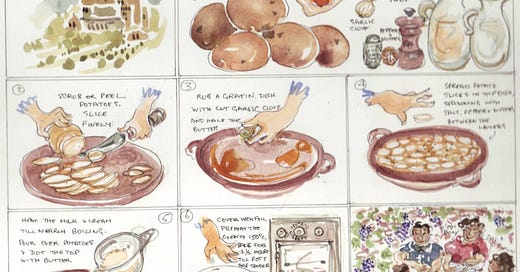


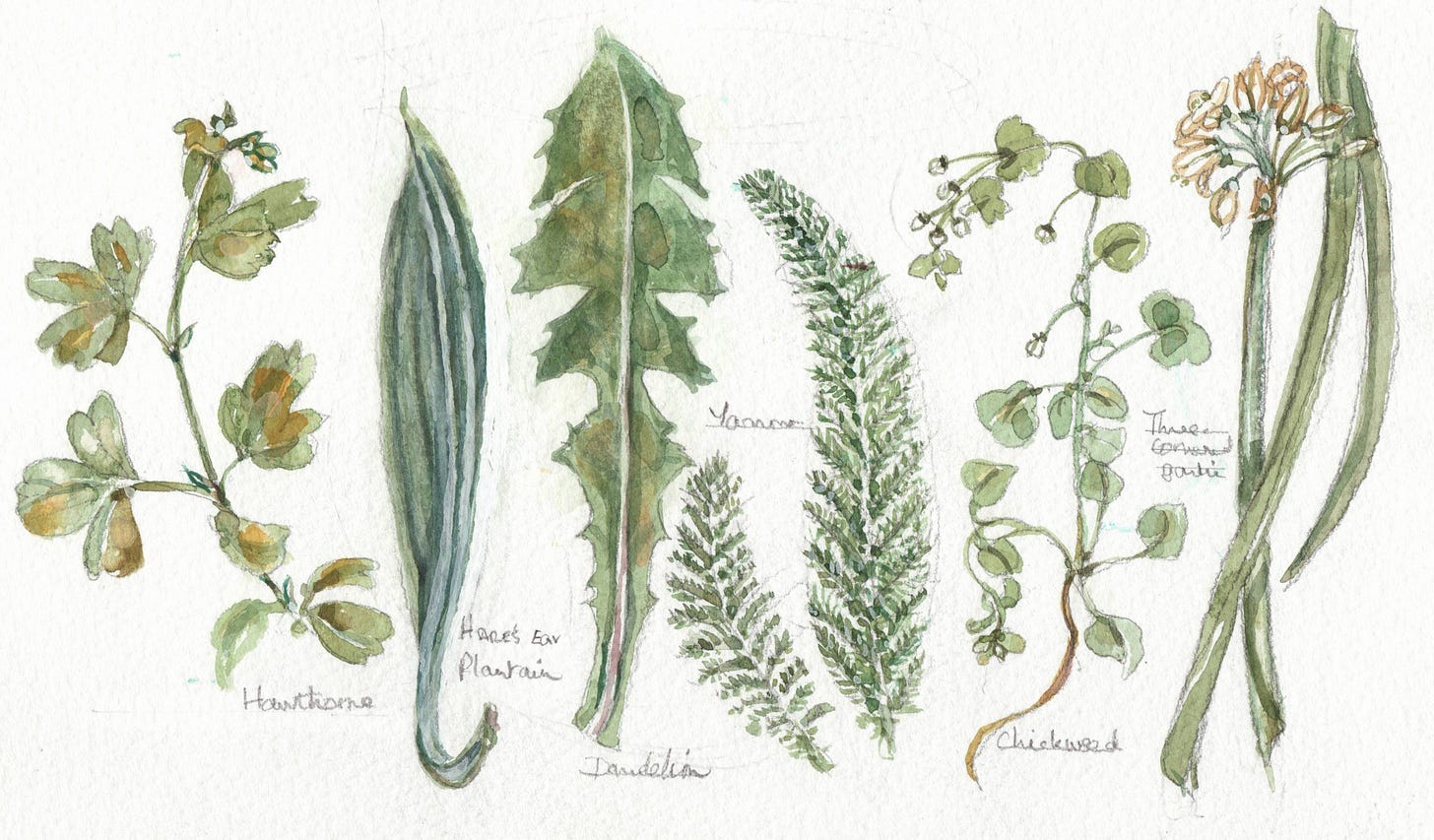
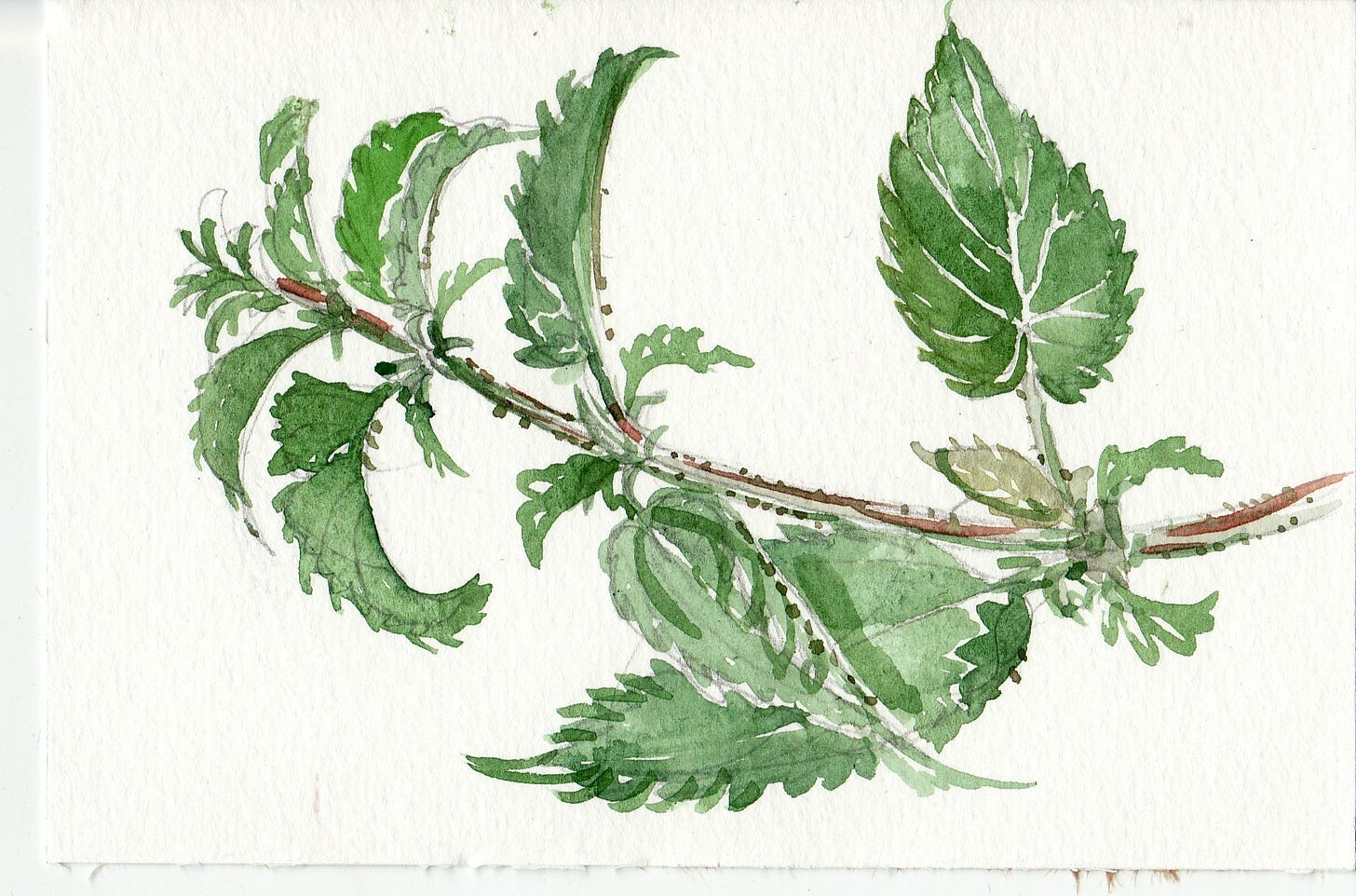
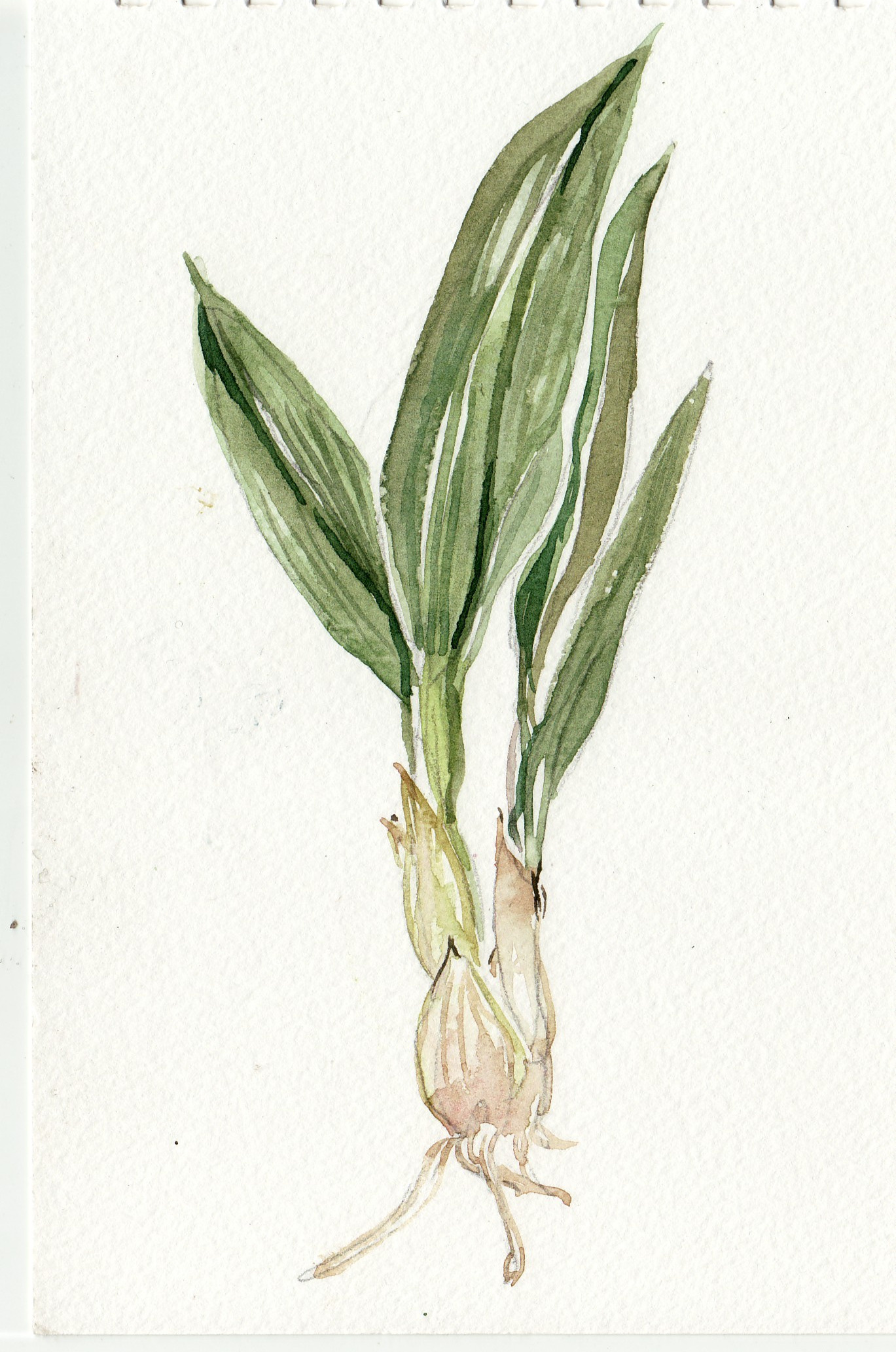
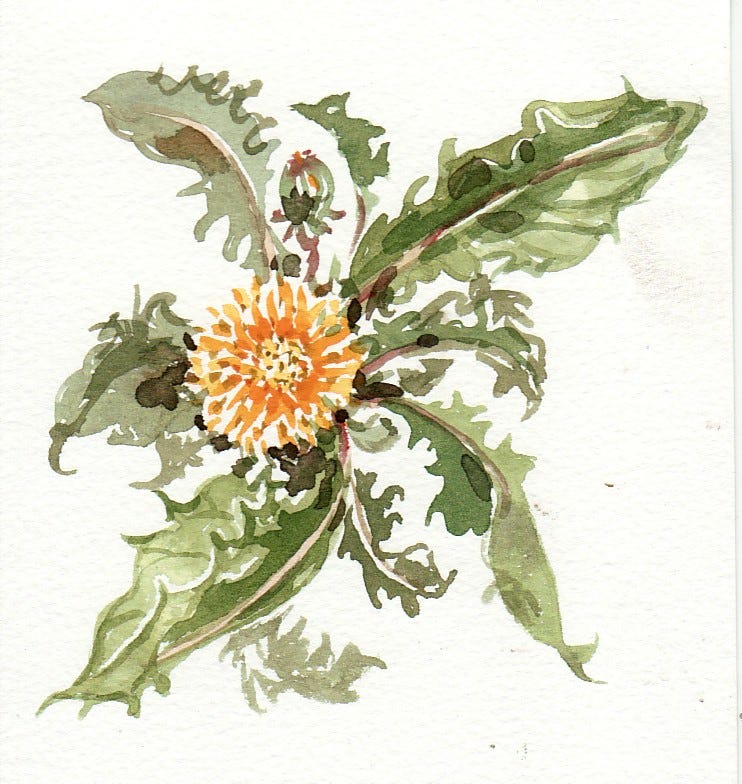
Dearest Elisabeth, Delightful as always. I opened this whilst on a foraging walk yesterday morning and it was like you were there with me. x
Love this, Elisabeth!
Have been eating dandelion greens (farmer grown), chopped into stir-fries, giving a refreshing tart edge.
I've never played with dandelion flowers (not nearly in view yet here in chilly Toronto). Love the idea of fritters.
Nettles will be at the farmers market in a couple of weeks. I agree, a very useful green, and also excellent for the lymphatic system I'm told.
🧡🧡🧡